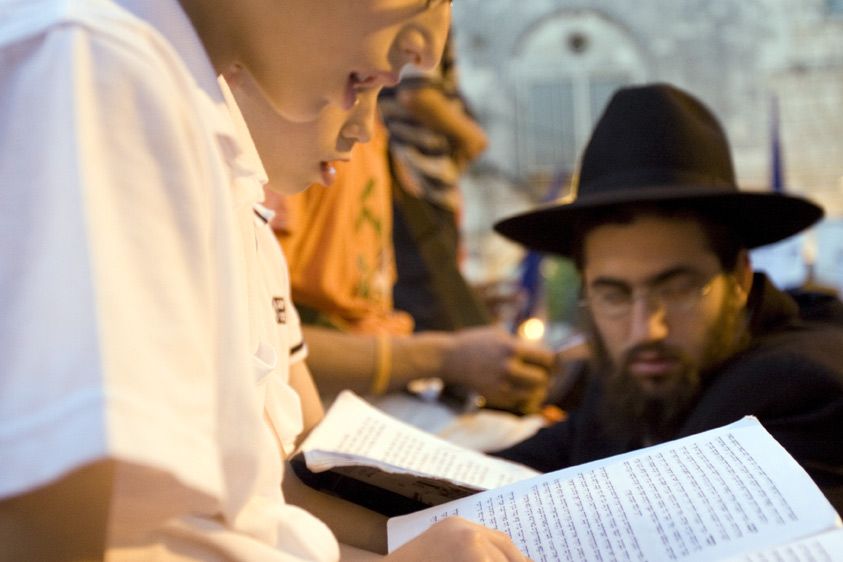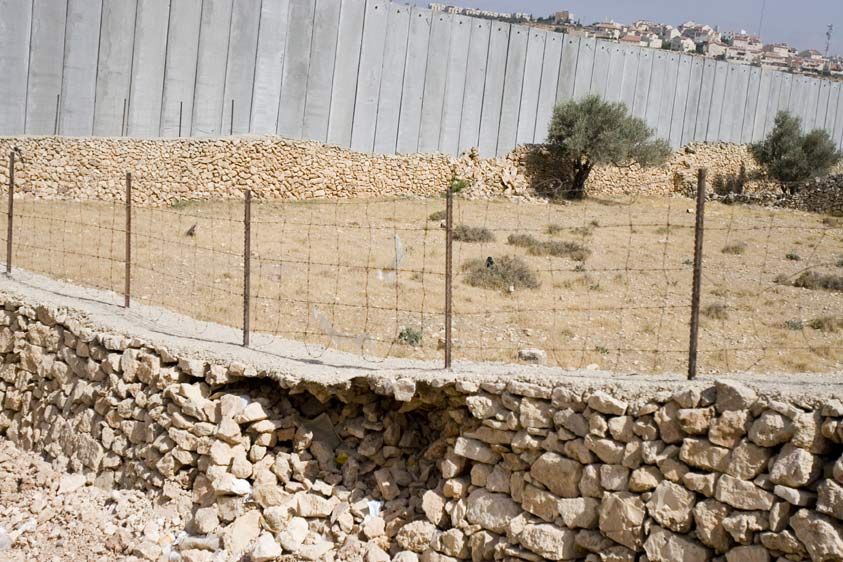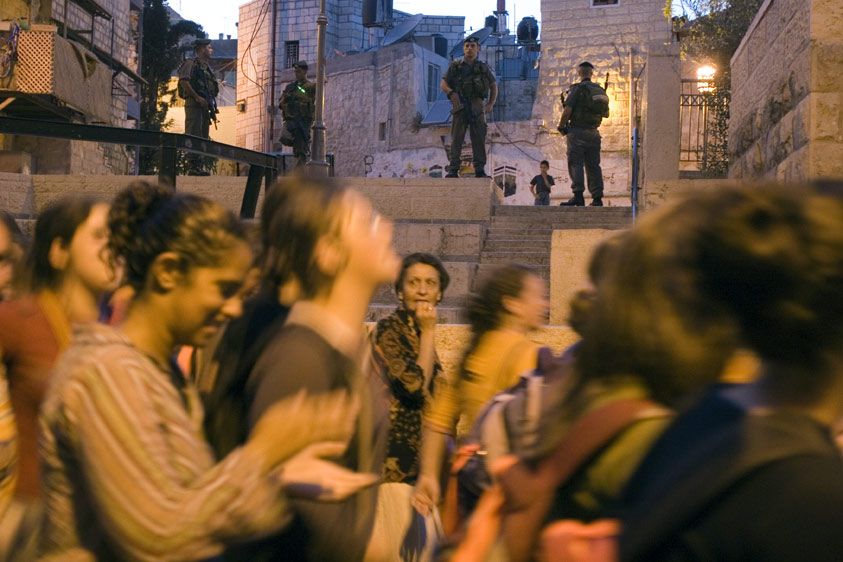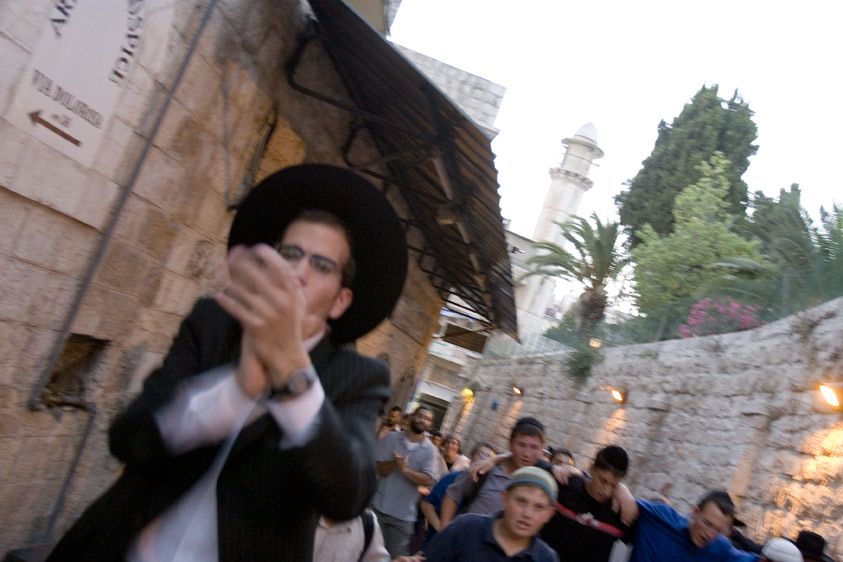The Settlement Movement
-
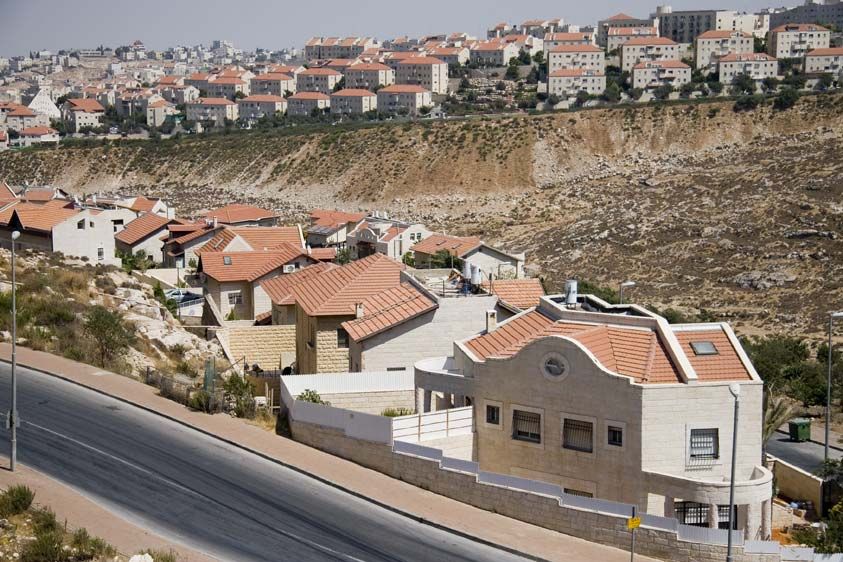
1pal_sttlmnt_05_03
Settlement supporters call the areas 'neighborhoods.' The Israeli government offers subsidies to immigrants to live there. They support a lifestyle comparable to Western suburban life to residents who maynot otherwise afford it.
-
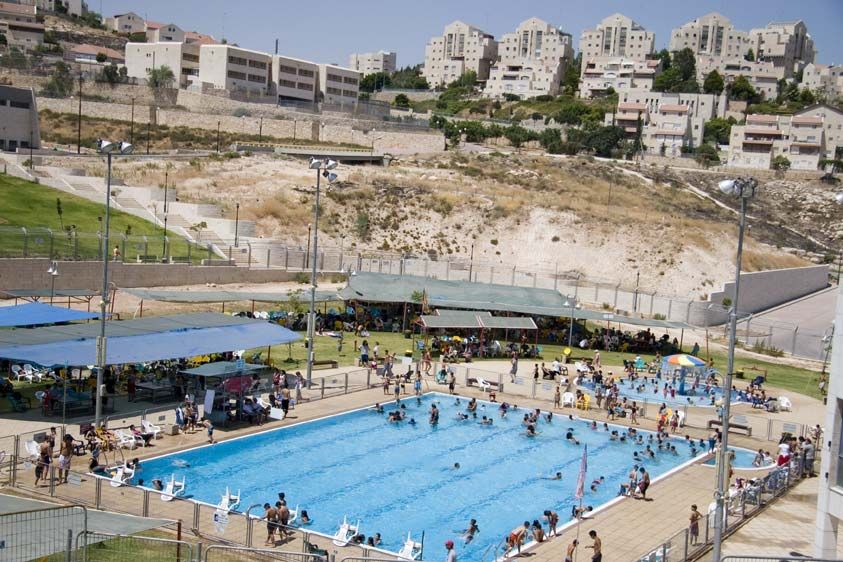
1pal_sttlmnt_05_07
Settlers comprise 20 percent of the West Bank and consume 80 percent of the water. In the summer when water is less abundant, Palestinians often conserve by washing less frequently and refraining from flushing the toilet.
-
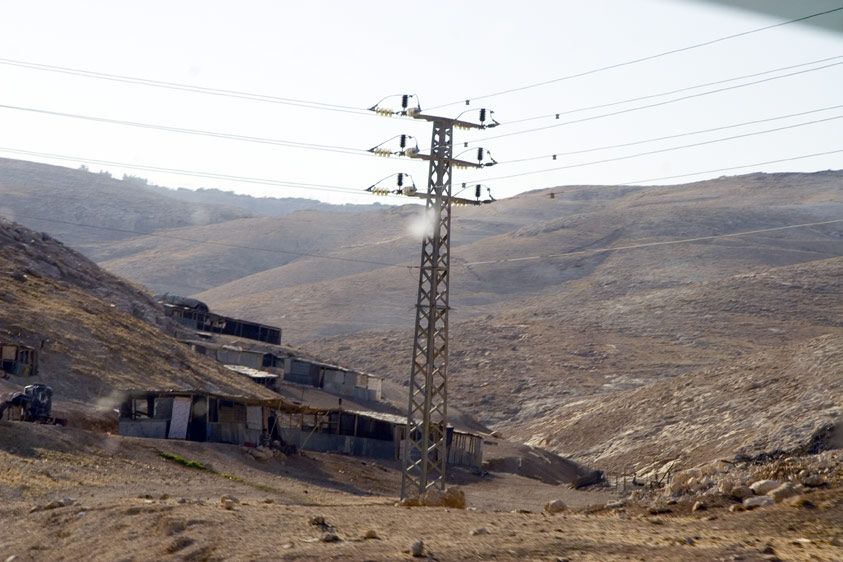
1pal_isrlblds_05_17
Bedouins live in rural poverty, bypassed by Israeli infrastructure for the West Bank settlements.
-
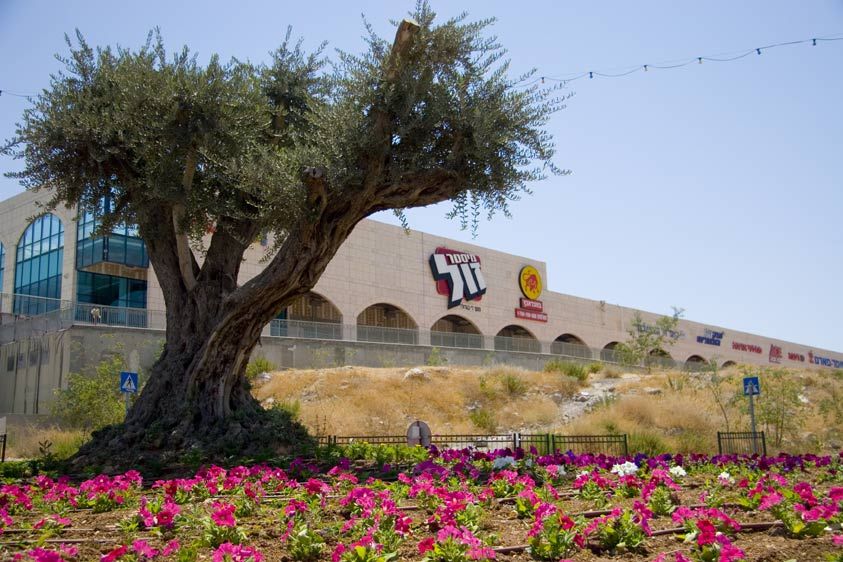
Old and New
The Olive tree is a regional symbol of nourishment and healing. Thousands of olive trees have been uprooted for the construction of settlements and the wall. An olive tree was transplanted in a settlement commercial area with fast food and Western mall culture.
-
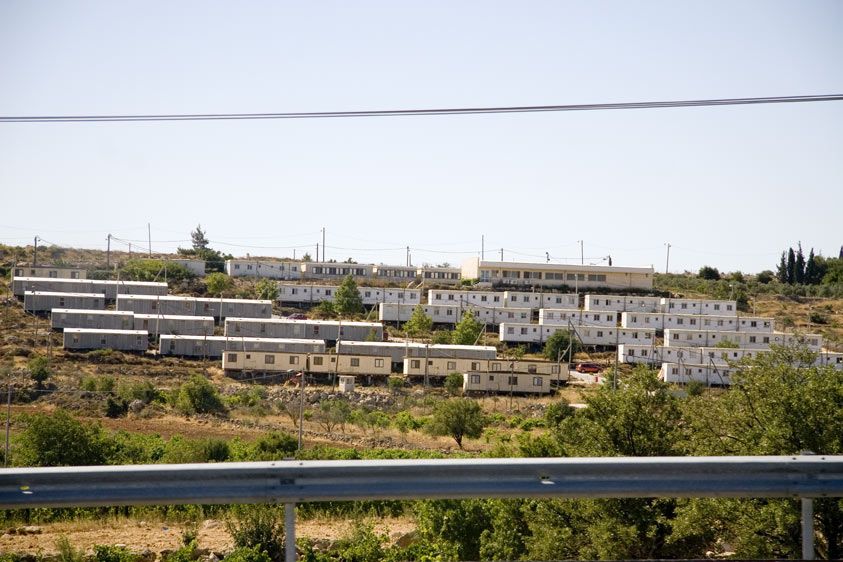
Settlement outpost
Areas for upcooming settlements are often 'claimed' by placing trailer homes as the first signs of Israeli population in the area.
-
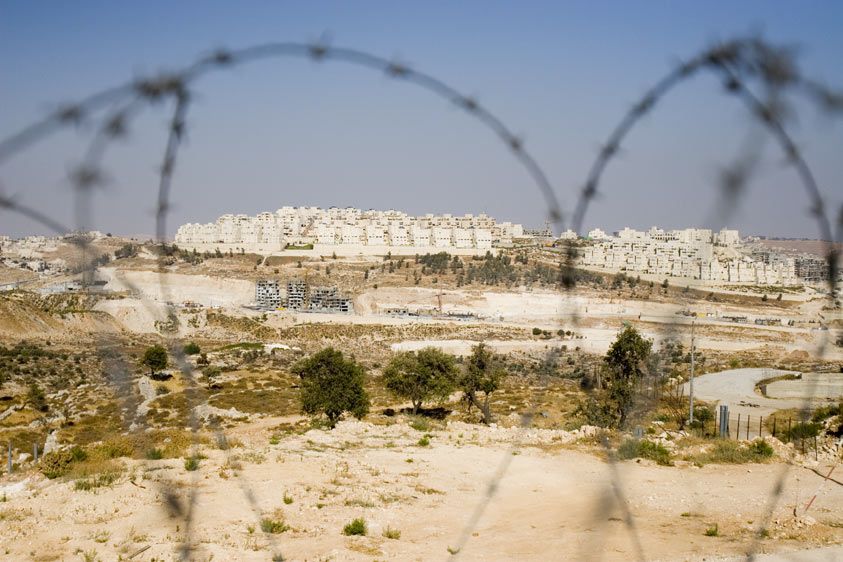
1pal_bthmchkpnt_05_03
Like many settlements, Ma'al Adumim occupies the strategic location of a hilltop.
-
![Settlers adhere to a conservative, even orthodox lifestyle. Here, settler males sing from the Torah. 1pal_sttlrrlly_05_04]()
1pal_sttlrrlly_05_04
Settlers adhere to a conservative, even orthodox lifestyle. Here, settler males sing from the Torah.
-
![A stone wall made by Palestinian farmers is dwarfed by the Israeli segregation wall. The settlement Gilo perches on the hilltop, it's area 'protected' by the segregation wall. 1pal_wallbthm_05_28]()
1pal_wallbthm_05_28
A stone wall made by Palestinian farmers is dwarfed by the Israeli segregation wall. The settlement Gilo perches on the hilltop, it's area 'protected' by the segregation wall.
-
![A settler march storms through the Arab Quarter of Jerusalem's Old City under the watch of the Israeli military. The Palestinian population was placed under curfew to avoid confrontation between the two groups. 1pal_sttlrrlly_05_06]()
1pal_sttlrrlly_05_06
A settler march storms through the Arab Quarter of Jerusalem's Old City under the watch of the Israeli military. The Palestinian population was placed under curfew to avoid confrontation between the two groups.
-
![The Settlement movement was founded on the idea that the Jews have a right to be in the Biblical lands of Judea and Samaria, commonly known as the West Bank.A settler rally charges through the Arab Quarter of Jerusalem's Old City. 1pal_sttlrrlly_05_01]()
1pal_sttlrrlly_05_01
The Settlement movement was founded on the idea that the Jews have a right to be in the Biblical lands of Judea and Samaria, commonly known as the West Bank.A settler rally charges through the Arab Quarter of Jerusalem's Old City.
